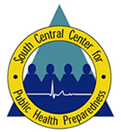
Fundamentals of Health Risk Assessment in Public Health
Course Description:
This course provides a survey of the theory and practice of human health risk assessment. The basic components of risk assessment are explained and real-life applications of each component and of risk assessment as a whole are discussed. In addition, special topics and issues related to risk assessment are covered, including basic toxicology, ecological risk assessment, uncertainty analysis, and risk communication. This course is intended for anyone who manages and interprets human health risk assessments.
Target Audience
Academic Faculty/Staff, Federal Government Employees, State Government Employees, Local Government Employees, Non-Government Employees and Students
Learning Objectives
Module 1: Introduction to Risk
- Define risk
Module 2: Introduction to Risk Assessment
- Differentiate between risk assessment, risk management, and risk communication
Module 3: The Four Components of Risk Assessment
- List and explain the four components of risk assessment
- Demonstrate how the four components relate to risk management
- Discuss the differences and similarities between the IARC and the EPA weight-of-evidence classification systems for carcinogens
- Differentiate between dose and environmental concentration
- List possible sources of toxicity data
- Explain the difference between the cancer and non-cancer dose-response models
- Define reference dose and explain how it is calculated and used in risk assessments
- List the main criteria for a standard chronic cancer rodent bioassay
- Define cancer potency factor and explain how it is calculated and used in risk assessments
- List four key variables in exposure assessment
- Explain the three main ways to estimate exposure
- Discuss assumptions, limitations, special issues, concerns with current risk assessment framework
Module 4: Regulatory Toxicology
- Discuss the attributes of toxic effects
- Specify potential toxicities for a given target system in the body
Module 5: Risk Assessment for Hazardous Waste Sites (CERCLA, Superfund)
- List and explain the stages of a hazardous waste site risk assessment
- Define and give examples of ARARs
- Define and give examples of TBCs
Module 6: Risk Assessment and Drinking Water (Safe Drinking Water Act, MCLs)
- Explain the difference between an MCL and an MCLG
- Discuss the criteria used to develop MCLGs for chemical contaminants
Module 7: Risk Assessment of Chemical Mixtures
- Explain the decision-making process of chemical mixtures risk assessment, including the treatment of whole mixtures vs. mixture components
- Define dose addition and response addition and give examples of when one or the other is used
Module 8: Ecological Risk Assessment
- Outline the regulatory basis for ERAs
- Describe characteristics of ecological study units and how contaminants might affect those characteristics
Module 9: Risk Communication
- Discuss reasons that effective risk communication is important
- Explain how public perceptions of risk can present barriers to risk communication
- Discuss the pros and cons of qualitative and quantitative risk communication strategies
- Understand the role of the media in the dissemination of health information to the public
Module 10: Uncertainty Analysis
- Differentiate between uncertainty and variability
- Compare and contrast a point estimate, an interval estimate and a probabilistic distribution
- Describe methods used for qualitative and quantitative uncertainty analysis
- Explain how a sensitivity analysis and a Monte Carlo simulation are performed, and compare and contrast the results from the two calculations
Instructor:

Amy Vinturella, MS, ScD
Available Credit
- 4.00 Participation/CETulane Professional and Continuing Education (PaCE) awards 4.00 hour(s) of credit for completing Fundamentals of Health Risk Assessment in Public Health
Price
Required Hardware/software
System Settings
This course is designed to work most effectively if your computer and internet connection meet certain minimal requirements. This course can be accessed using a Windows 10 PC or a Mac with High Sierra1, Mojave, or Catalina. Pop-up blockers should be disabled when viewing the course. Internet Explorer 11 (for Windows 10), or the current version of Google Chrome, Mozilla Firefox, or Apple Safari (for Windows 10 and or Mac) is required. Many of our courses require Java and JavaScript enabled.
Links to External Websites
Links to websites outside this course will open in a new window or tab. Some browsers may minimize the course window. If this occurs, maximize the course window to return to the course.
Adobe Acrobat Reader (for desktops and laptops)
Adobe Acrobat Reader is required to access some documents in this course. If you need to download a free copy of Acrobat Reader, click here.
Internet Connection Speed
A minimum download speed of 1.5 Mbps is recommended for an optimal experience, which is commonly the speed associated with a basic DSL or a cellular/satellite connection. A faster connection, such as cable or fiber service, with further enhance your online experience. A Wi-Fi connection is generally acceptable, but it is dependent upon one of the two services mentioned above. You can check your internet connection speed at http://www.speedtest.net/.

 Facebook
Facebook Twitter
Twitter LinkedIn
LinkedIn Forward
Forward